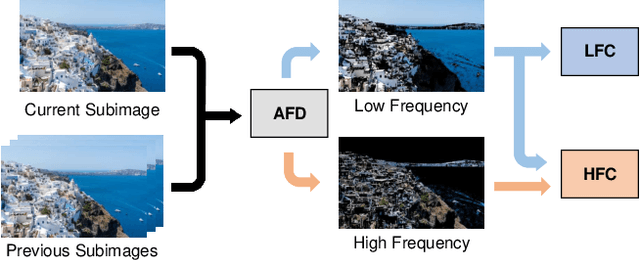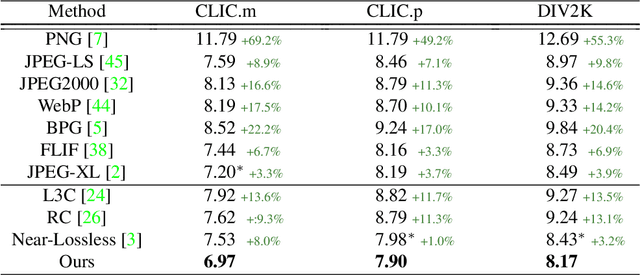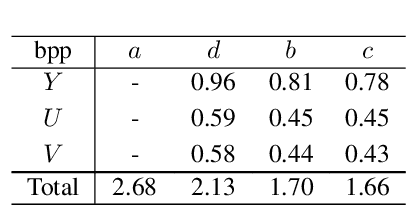LC-FDNet: Learned Lossless Image Compression with Frequency Decomposition Network
Paper and Code
Dec 13, 2021



Recent learning-based lossless image compression methods encode an image in the unit of subimages and achieve comparable performances to conventional non-learning algorithms. However, these methods do not consider the performance drop in the high-frequency region, giving equal consideration to the low and high-frequency areas. In this paper, we propose a new lossless image compression method that proceeds the encoding in a coarse-to-fine manner to separate and process low and high-frequency regions differently. We initially compress the low-frequency components and then use them as additional input for encoding the remaining high-frequency region. The low-frequency components act as a strong prior in this case, which leads to improved estimation in the high-frequency area. In addition, we design the frequency decomposition process to be adaptive to color channel, spatial location, and image characteristics. As a result, our method derives an image-specific optimal ratio of low/high-frequency components. Experiments show that the proposed method achieves state-of-the-art performance for benchmark high-resolution datasets.
 Add to Chrome
Add to Chrome Add to Firefox
Add to Firefox Add to Edge
Add to Edge